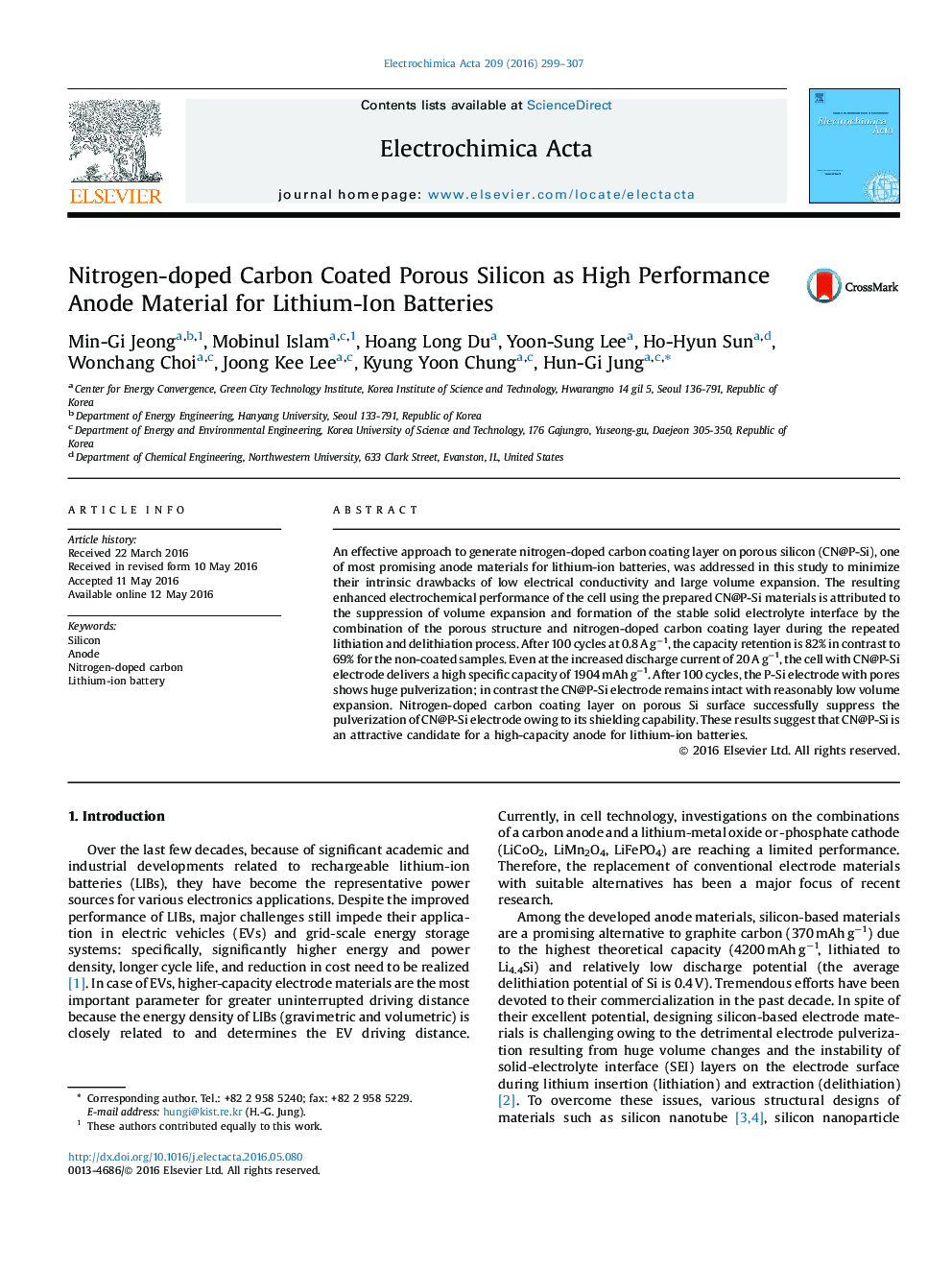| Article ID | Journal | Published Year | Pages | File Type |
|---|---|---|---|---|
| 6606840 | Electrochimica Acta | 2016 | 9 Pages |
Abstract
An effective approach to generate nitrogen-doped carbon coating layer on porous silicon (CN@P-Si), one of most promising anode materials for lithium-ion batteries, was addressed in this study to minimize their intrinsic drawbacks of low electrical conductivity and large volume expansion. The resulting enhanced electrochemical performance of the cell using the prepared CN@P-Si materials is attributed to the suppression of volume expansion and formation of the stable solid electrolyte interface by the combination of the porous structure and nitrogen-doped carbon coating layer during the repeated lithiation and delithiation process. After 100 cycles at 0.8 A gâ1, the capacity retention is 82% in contrast to 69% for the non-coated samples. Even at the increased discharge current of 20 A gâ1, the cell with CN@P-Si electrode delivers a high specific capacity of 1904 mAh gâ1. After 100 cycles, the P-Si electrode with pores shows huge pulverization; in contrast the CN@P-Si electrode remains intact with reasonably low volume expansion. Nitrogen-doped carbon coating layer on porous Si surface successfully suppress the pulverization of CN@P-Si electrode owing to its shielding capability. These results suggest that CN@P-Si is an attractive candidate for a high-capacity anode for lithium-ion batteries.
Related Topics
Physical Sciences and Engineering
Chemical Engineering
Chemical Engineering (General)
Authors
Min-Gi Jeong, Mobinul Islam, Hoang Long Du, Yoon-Sung Lee, Ho-Hyun Sun, Wonchang Choi, Joong Kee Lee, Kyung Yoon Chung, Hun-Gi Jung,
